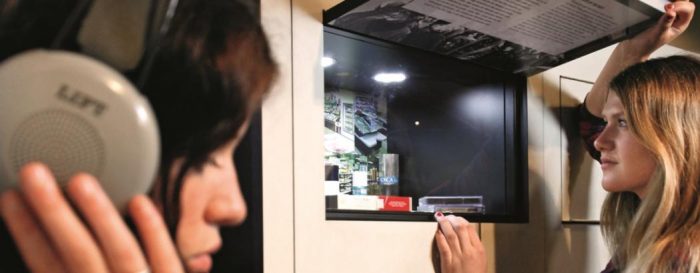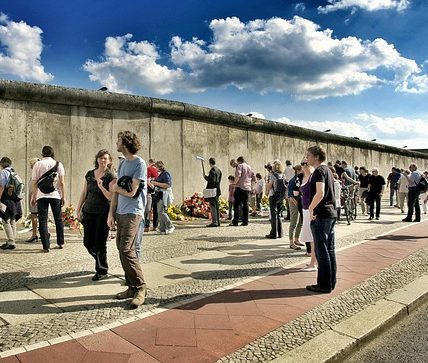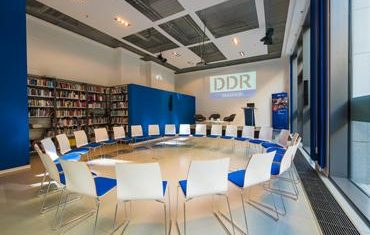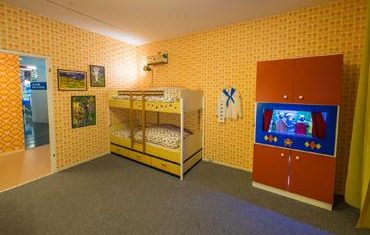To the fan of TV drama, the 2015 release of Deutschland 83 provided a gripping account into the differences of life either side of The Wall. The series was arguably successful in providing the audience with something teachers are always trying to generate – perspective. Something the DDR Museum in Berlin will bring to the forefront for History students.
How can students benefit from a visit to the DDR Museum?
A school trip to Berlin would seem an obvious place to start, but more specifically it is the DDR Museum that is able to tap into life in the former German Democratic Republic (GDR). The fun and interactive museum has carefully considered how school groups can learn about life in the former German Democratic Republic during the Cold War and created a centre that ticks the boxes.

Extending from the main exhibition which delves into everyday life in the DDR and the realities that stem from Socialism, a new additional exhibition has been added to the museum’s permanent collection.
Students will have the chance to enter a scene that aims to immerse visitors in a “through the eyes of” experience. A complete 1980’s high-rise tower block apartment has been recreated to show the private aspect of life during this time.
The primary goal of the exhibition is to tell the story of the people living in the Soviet Occupation Zone with the aid of objects, pictures and games. Together it recreates not only a scene but atmosphere that allows students to feel and progress from a platform encouraging enquiry.
Standing as the largest DDR exhibition in Berlin, the museum boasts 35 topic areas and an ever-expanding collection of over 250,000 objects. Such an environment inevitably sees the learner immersed into the sights common in everyday life. The exhibition encourages students to pursue lines of enquiry and question what they see.
What was the theory behind limiting designs? Were the people of East Germany aware of the material growth of the West?
What to expect from the DDR Museum?
Interactivity is part of the experience at the DDR Museum while there are also a number of additional services available to school groups.
- Free quizzes suited to various levels
- Visitor centre accessible before and after the visit of the exhibitions
- Tours upon request
- Lectures, workshops and contact interviews upon request
- Opportunity for language students to communicate with eyewitnesses in native language and English
Through the many topics the museum successfully touches on, students no only gain an insight into a way of life, but develop an understanding of the mindset embedded under the GDR one-size fits all mentality. From personal items to artefacts that paint a picture of the public sphere and foreign relations, the DDR Museum provides an in-depth view of life in the GDR.
Understanding the East
“45,000 sections of reinforced concrete — three tons each. Nearly 300 watchtowers. Over 250 dog runs. Twenty bunkers. Sixty five miles of anti-vehicle trenches—signal wire, barbed wire, beds of nails. Over 11,000 armed guards. A death strip of sand, well-raked to reveal footprints. 200 ordinary people shot dead following attempts to escape the communist regime. 96 miles of concrete wall.”
– Taken from Tying Down the Lion by Joanna Campbell



Those who may have visited the Checkpoint Charlie Museum in Berlin may be aware the many attempts made to escape East Germany.
Likewise, a trip to Tränenpalast Museum in Berlin will highlight the anguish friends and families went through at the former border crossing at the Berlin Friedrichstrasse station. Some may have accepted the way of life in Germany, while others felt a need to break away from the oppression felt…or at least attempted to.
Joanna Campbell’s words above hardly paint a picture of an idyllic nature. Students may indeed feel shocked by such an account. However, away from the harshness seen on the border, school groups need to be presented with a clear account of life inside the GDR.
Where textbooks cannot fill in the gaps about life in East Germany, the DDR Museum educates, informs and provides a hands-on experience to school groups few would have thought possible to offer.


Comments are closed here.